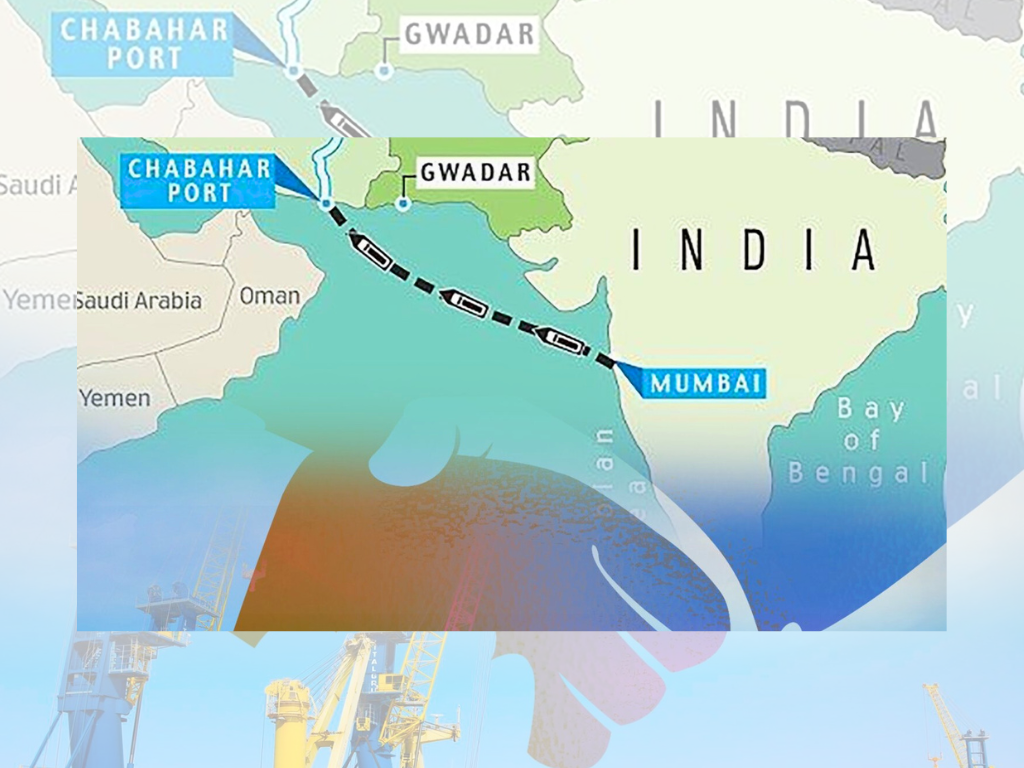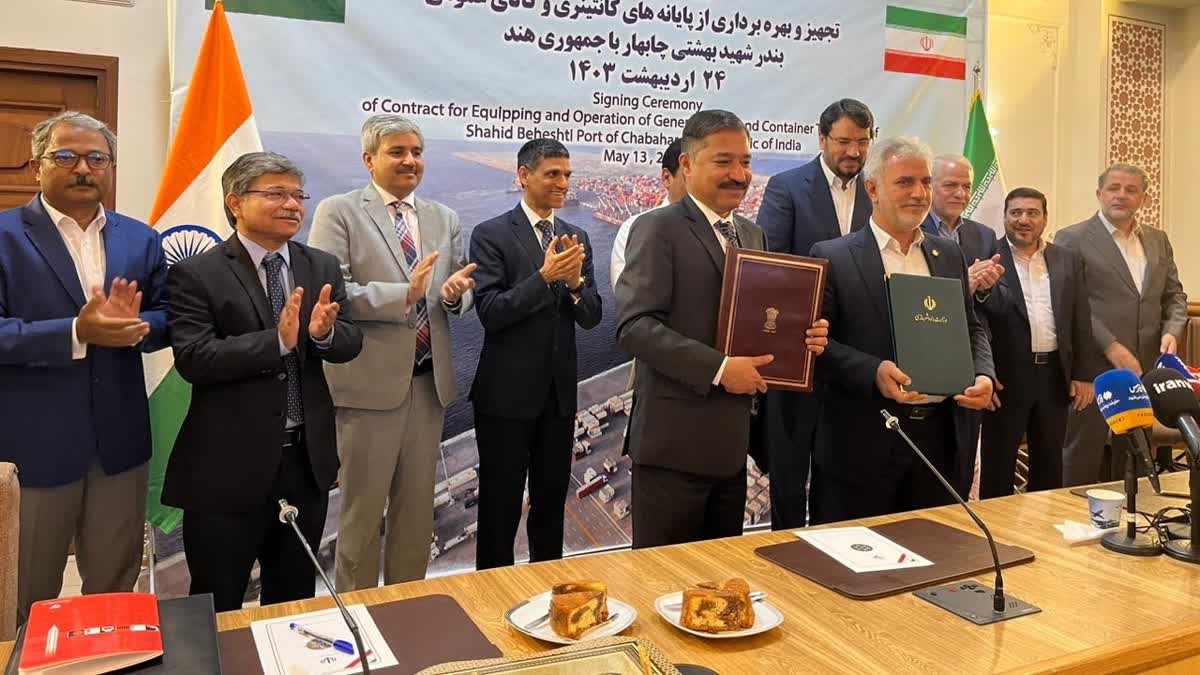On 13th May, India and Iran signed a deal in Iran which allows India Global Ports Limited (IGPL), a joint venture of the PSUs Jawaharlal Nehru Port Trust and Kandla Port Trust, to operate the Shahid Beheshti terminal (one of the two terminals in Chabahar, the other being Shahid Kalantari terminal meant for cargo towards Russian Federation and Central Asia) for ten years.
The development of this port, originally envisaged by the Shah of Iran in the early seventies, was delayed due to the Islamic Revolution in Iran. However, the first phase of the project was opened in 1883 as Iran wanted to shift its port activity eastwards to ease the pressure on its only port Bander-e-Abbas which was in danger of Iraqi attack capable of paralysing Irani maritime commerce. By 1983, Iran had constructed four 45 meters berths at Shahid Kalantari and four 150 meters berths at Shahid Beheshti. Two larger berths, 235 meters and 265 meters were constructed later in 1997 and 2004 respectively.

India's Entry Into Shahid Beheshti Port
In 2003, India showed interest in developing the Shahid Beheshti port but no progress could be made due to the sanctions imposed on Iran. However, in 2016, both countries signed an agreement under which India was to refurbish one of the berths and reconstruct a 600- metres long container handling facility. This also was initially delayed due to the reluctance of bidders in the still prevailing environment of sanctions on Iran. Later, the US exempted India’s Chabahar project from the sanctions imposed on Iran on the grounds that this project was aimed at the economic development of Afghanistan.
Extending Operational Authority Tenure
In 2017, the first Indian ship carrying wheat for Afghanistan berthed at Chabahar thus opening an alternative trade route for Afghanistan and, in future, further to Central Asian region. The earlier deal of giving India operational authority on annual basis was not only inconvenient to Indian companies but was also impractical from the investment in equipment and manpower due to uncertainty of renewal of the deal. Under the agreement signed today, IGPL will run the port for ten years thus ending the uncertainty. Another point of dispute causing delay was the provision of Arbitration which has now been done away with. Now the parties will resolve disputes by mutual consultations at the highest level.
IGPL has already invested US$125 million in stationing six heavy duty cranes at the Beheshti terminal and Inda has announced to extend a soft loan of US$ 250 million for the port development related activities like setting up a SEZ at the terminal. India is also partly involved in construction of the rail-road from Chabahar to Zahidan (630 Km.) near Afghan border. India has constructed road from Daleram to Zaranj (near Zahidan) to ensure a smooth and fast movement of cargo from Chabahar. India’s total investment in the Chabahar port, SEZ and connectivity will be around US $21 billion.
How is Iran going to benefit by the port and rail-road connectivity project?
Iran does not have any port in the Indian Ocean or in the Arabian Sea to be precise. Its only port Bandar-e-Abbas, situated at the Strait of Hormuz, is very crowded despite not being a deep-sea port. It cannot handle large cargo ships carrying 2,50,000 tons or more cargo. So, Iran -bound large cargo ships anchor at ports in UAE from where the consignment is transhipped to bander Abbas in smaller vessels. This takes time and the cost goes up due to the transhipments. Secondly, having a bigger and deeper port at Chabahar (the depth of ten births on two terminals varies from 6 metres to 15 meters) will mean bigger business opportunities resulting faster development of economy in specially when Iran is reeling under the American sanctions. Strategically also, having a big deep-water port in the Indian Ocean (fast becoming a hot-bed of global power game) will certainly boost Iran’s importance in the region.
What is there for India in development of Chabahar?
In fact, India stands to gain more from Chabahar project than Iran. Firstly, India-Afghanistan trade will receive a boost in its arm. So far, the air-shipment to Afghanistan from India had not been cost-effective as it has to circumvent Pakistan due to Pakistan’s refusal to allow Indian planes to fly through its sky. Sending cargo by land to Afghanistan too has proved impractical as we have experienced while sending by road last consignment of wheat as relief package to Afghanistan. Sending goods to Afghanistan via Chabahar has proved to be around 60% cheaper than even the land route via Pakistan. Secondly, it will open-up a new and cost-effective route for trade between India and the central Asian countries which has so far been to Europe via Suez Cand further to central Asia.
The Strategic Importance
Last, but the most important benefit is strategical (though has not been explicitly stated anywhere). With the Chinese-run Pak port of Gwadar just 76 nautical miles (149 Km.) east of Chabahar, the Indian-managed port will enable us to keep an eye on the Chinese activity in the Arabian Sea. Also, this Chabahar -Afghanistan route will give us a direct and short approach to our Air base in Farkhar in Tajikistan, Central Asia. This actually perfectly fits in our “Necklace of Diamonds” scheme (with our presence in Car Nicobar, Colombo container port terminal, Agalega in Mauritius and Qurm in Oman which is an answer to the Chinese scheme of “String of Pearls”. This agreement will certainly be enough to add to severe discomfiture of China and its protégée Pakistan.



